The Land Cries Out
SUMMARY: A pioneering prophet-activist exposes the rarely reported social and ecological roots of a crisis that has claimed 43,000 lives since 2006 in Mexico. His untiring community development in the most dangerous state of Mexico has resulted in grassroots gains—amid drug lords, greedy corporations, and blundering/corrupt government—and made him an ambassador of choice for dozens of American partners seeking to empower displaced small farmers and indigenous Indians.
Article by Todd Svanoe
Photography by Noah Wolf
Published by Prism Magazine, February 2012
Standing by an ’86 Chevy truck packed to the gills with fruit trees, books, sacks of cement, and other anti-poverty supplies, community developer Fernando Hernández takes a quick break before leaving on his next sortie to the parched Copper Canyon.
It is June 2011 in his border state of Chihuahua, just south of a sun-baked Texas, and Hernández’ fellow Mexicans have suffered 300 straight days of drought. “Their cows are dying,” he says through a translator. “To many of them, that is like losing their bank accounts. It’s so dry in Balo Jaquie, eight hours from here, that springs are reduced to a trickle. Even their bees compete for the remaining water. If we had not built a small reservoir to contain last year’s rain, they would have lost almost everything.”
A respected people’s theologian and pioneering activist, Hernández has spent his life defending and empowering the poor in this largest and most dangerous state in Mexico, where one-third of the country’s 43,000 murders have occurred since the Mexican government began challenging drug cartels in December of 2006.
Hernández, whose brother was killed in a vicious land grab in 2007, remembers the deforestation and marijuana plantations in Chihuahua that set the stage for this barbarism 50 years ago. His family was among those whose homes were bulldozed when the first deals were struck—when logging companies, the Mexican government, and the World Bank created a perfect storm for which they are now officially repenting.
While the federal government has made repeated efforts to address poverty in northern Mexico, they have not only been counterproductive, Hernández explains, but they have also failed to address what for him are the obvious underlying causes—toppled land rights, deforestation, pitiful schools, and an evaporating water supply—problems he has risked life and limb to help address through partnerships with dozens of international donors, researchers, and volunteers.
Hernández remains focused on the deeper fallout from Chihuahua’s crisis, the loss of multi-generational sustainability for his land-raped neighbors, who just barely subsist, both small farmers and the indigenous Tarahumara Indians, Canyon dwellers for whom Hernández has been a community developer and guardian angel for two decades.
“If we want change, we have to do it on our own.”
The 68-year-old does the work of a dozen men, making strategic deliveries to 40 Tarahumara villages up to 500 miles away from his home, planting thousands of fruit trees in deforested lands each year, building reservoirs to replace lost aquifers, and hosting workshops on composting, beekeeping, and organic farming.
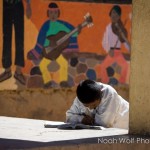 Meanwhile, Hernández’ wife, Maria, disseminates and manages 141 American-sponsored educational scholarships for Tarahumara students, junior high through college-age, investing in future community-building leaders through the couple’s primary US partner, Canyon Scholars.
Meanwhile, Hernández’ wife, Maria, disseminates and manages 141 American-sponsored educational scholarships for Tarahumara students, junior high through college-age, investing in future community-building leaders through the couple’s primary US partner, Canyon Scholars.
Land rights and displacement
A leader reminiscent of the fabled activist Pancho Villa—a fellow Chihuahuan peasant revolutionary who also fought for land rights—Hernández is more crafty and collaborative but no less passionate, having spent 19 years in the courts himself as a lay advocate and leader defending the land rights of small farmers.
This is an underlying problem that is missed by Americans puzzling over immigration and the drug war, says Hernández. Only 12 percent of all land in Mexico is cultivated, accelerating tensions between rural Mexicans, drug plantation owners, and land-clearing corporations.
“Just last year a man won a land-rights case for indigenous landowners, and he was promptly murdered,” says Hernández. “This is as big a problem now as ever, and will be as long as corporations want our land and trees.”
Hernández’ own brother was extorted in 2007 in a failed land grab at the Hernández family farm. His late father left his life’s earnings—3,500 acres with corn, beans, alfalfa, and 200 cows—divided between eight brothers and sisters. “It’s their only security,” says Hernández.
Three men, hoping to win the farm as ransom, stuffed his brother into a car and, when he struggled to escape, shot and killed him. “We complained to the government,” says Hernández, “but the word came back that the murderers themselves had died in a conflict with a cartel.”
A visionary, evangelical Catholic who believes he’ll see his brother again one day, Hernández is resilient, shouldering his cross while doing what he can to invest in future generations well beyond his own family. Hernández has the wisdom of a historian to see root causes, the gentleness of a dove to avoid assailants, and the boldness of a lion to warn those who will listen about the crash courses they are on.
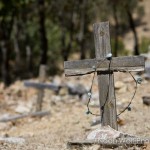 “A civilization that has getting money as its main value and that exploits the earth is not sustainable in the long run,” says Hernández, “because it destroys and contaminates nature, generates physical and mental illnesses, and creates economic pursuits that are profitable but destructive and deadly, like drugs and war.”
“A civilization that has getting money as its main value and that exploits the earth is not sustainable in the long run,” says Hernández, “because it destroys and contaminates nature, generates physical and mental illnesses, and creates economic pursuits that are profitable but destructive and deadly, like drugs and war.”
Forgive him for sounding apocalyptic, but he’s lived precisely those consequences since childhood in this land where cartel terror reigns and grisly body-bag reports are issued weekly.
Hernández was born in a gold mining town in southern Chihuahua into a hard-working family on an ejido—government-mandated, communal land, common throughout rural areas of Mexico. Joining 100 families, his father scrimped and saved, adding cows and renting pastureland in years when the harvest was good.
Ejidos are generally provided by government arrangement with wealthy landowners, who surrender them for public welfare purposes, but “land grabs” are common when developers see a new economic opportunity and pay off or petition the Mexican government.
As a boy Hernández rose early each morning, milked the cows, and carried and sold milk on their mule from house to house. “I learned to grind corn and cook and helped my mother with the laundry. On summer vacations from school I helped plant the fields with corn, beans, potatoes, and squash.”
Yet, in years of drought, there was nothing to offset their losses, as government subsidies have historically provided farmers in America. “My father would go to the US, sometimes for an entire year, and work on contract as a bracero (migrant worker).” Investing in his family’s future, he’d send money home to buy more cows, Hernández says.
Hernández and his family have been lifelong border crossers, but not by choice. “One time my dad went into debt to buy some cattle,” he explains. “To pay off the bank, he went north to work on a big ranch. Because I wanted to buy a truck, he invited me to go with him.”
The two tried to cross the Rio Grande River together at the border near Juarez, he says. “My dad and I threw ourselves into the water, but the current of the water was very strong and I got caught in a canal. It dragged me along, and my Dad ran along the shore shouting, ‘Don’t give up! Don’t give up!’ I will always remember this, because my Dad did not get frightened easily, and I saw he was scared.
“Finally I grabbed at a weed that was growing in a crack in the cement. It held and thanks to God, to my youth, and to the shouts of my father, I overcame the current.”
Hernández asks Americans to try and walk a mile in Mexican shoes. This was one of three times he nearly lost his life as a border crosser, another due to a murder threat, and the last from desert starvation.
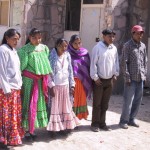 “I have crossed the border seven times, and I’ve learned a lot, but I don’t want to leave my family and live in America. Finally, I realized it wasn’t worth it.”
“I have crossed the border seven times, and I’ve learned a lot, but I don’t want to leave my family and live in America. Finally, I realized it wasn’t worth it.”
The point is this: The lack of land security and a path to prosperity leaves aspiring Mexicans no choice. A World Bank report shows that, after the Mexican economy stabilized in 2004, only 18 percent of urban and rural Mexicans still struggled with “food poverty” and 25 percent experienced “capacities poverty” (lack of opportunity to advance), but a whopping 48 percent complained of “assets poverty” (lack of land or capital to invest).
“However, if you think Mexicans lack ambition, how do you explain the fact that, in 2008, Mexicans in the US sent $25 billion home to their families?” asks Tony Burton, coauthor of Geo-Mexico: The Geography and Dynamics of Modern Mexico (Sombrero Books, 2010), who first visited the Copper Canyon region 30 years ago. “Not millions, billions!”
“Land security is something Americans take for granted,” says Burton. “However, it is as foreign to most of Mexico’s rural population as economic progress itself.”
For Hernández’ family of origin and others on their ejido, there wasn’t so much a pull to America to find a better standard of life as the push of drought, displacement, and the threat of poverty when times were hard. For the most part, they enjoyed their lives, he says.
“Family and friends had meals at my house in the tradition of Mexican hospitality,” he says, indicating his family was better off than most. That is, until one day when everything in their world was turned upside down.
During the years that Hernández’ family tried to build their wealth and own a ranch, rich landowners wanting to reclaim the land nipped at their heels. For 10 years his father had fought this kind of land claim in the courts, but his dreams ended when Hernández was 9.
One morning men with a bulldozer arrived at their door, announcing that the families had lost their case. Hernández explains: “Truckloads of soldiers came and, with roughness and shouting, loaded families with their furniture onto trucks. We were asked to choose where we wanted to be taken from among the nearest towns and ranches. Trucks returned every two days until all the people were moved.”
Shortsighted pillaging
This region was first targeted by loggers in the late 1800s. But with the completion in 1961 of the famous 408-mile Chihuahua-Pacific Railroad, stretching from southern Texas to the Copper Canyon, logging picked up its pace.
“That railway allowed easy access to areas of old-growth forest that had previously been virtually inaccessible,” says Burton.
The most severe threat to old-growth stands, however, was a 1989 World Bank loan to Mexico of $45.5 million for a logging and forest management project. The plan, to log more than 4 billion board feet of lumber from 20 million acres of forest over six and a half years, was ostensibly put in place to help Mexico correct its trade deficit by reducing its dependence on imported paper pulp.
But far outweighing any national gain, the deforestation largely erased the livelihood of the Tarahumara and paved the way for marijuana plantations on that land. That has included years of both extreme drug cartel violence and, at times, death-threat-enforced Tarahumara road-clearing labor.
As army surveillance helicopters now hover over Chihuahua, and while troops clear marijuana fields, the World Bank concedes that funding lumber-harvest solutions to Mexico’s economic debt 20 years ago created a greater, more enduring poverty. Today, it suggests that land grants are the way to go.
 “Increasing land rights for poor people is the key to reducing poverty and stimulating economic growth,” a repentantly toned World Bank report concludes. Increased land values “can greatly increase poor people’s wealth. In worst-case scenarios, the failure to make progress on land reform leads not only to slower economic development but also to violence and bloodshed.”
“Increasing land rights for poor people is the key to reducing poverty and stimulating economic growth,” a repentantly toned World Bank report concludes. Increased land values “can greatly increase poor people’s wealth. In worst-case scenarios, the failure to make progress on land reform leads not only to slower economic development but also to violence and bloodshed.”
Hernández shakes his head at this postdated wisdom, decrying the shortsightedness that eroded land, depleted underground aquifers, and led to a loss of native knowledge in both the US and Mexico. The ancient Tarahumara governors warned of this degradation, he says.
“They said that our very purpose for being in the world is to look after and take care of the land and its people. The Holy Scripture itself says a day will come when human beings will stop being wolves descended from humans and will beat their swords into plowshares, and abundance will flow like water,” says Hernández, who is concerned about a global ecological crisis.
When the land becomes no more than pawns on a chess board, life loses purpose and gets out of synch, he says.
Having watched the dissolution of law and order in Mexico and the inevitable chaos resulting from unbridled greed, Hernández warns about a similar economics-driven trend he sees—and warns is unfolding—in the United States and abroad. He decries the multiple consequences of the consolidation of power in the hands of a few, from pesticide-drenched farms to genetically altered products; from unprecedented oil spills to mortgage crisis bailouts; and from nuclear disasters to trillion dollar debt.
“At the same time, more people around the world are coming to fight for the environment, which brings me hope,” he says.
“We must invite other believers and nonbelievers to put forth effort to take care of the world’s resources and to construct sustainable forms of the economy. All that will need to be under the guidance of Jesus and of common sense. The promise of life in abundance that Jesus himself offered us, I believe, is for this earth, not only for eternity.”
Abundant land is now nearly nonexistent for the poor of the Sierra. Today only 1 percent of the old-growth forest remains in Sierra Occidental, leaving numerous native animals—like the Imperial Woodpecker, parrots and macaws, the Mexican grizzly bear, and gray wolf—at or near extinction levels.
Mexican authorities for decades have sprayed drug fields with paraquat and other chemicals, wiping out rare butterflies and habitat, adding insult to injury, and contaminating local water supplies for the Tarahumara and their animals.
“Today when I travel to the Sierra, it’s like Rachel Carson’s Silent Spring,” says Canyon Scholars Director Howard Stadem. 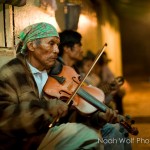
“No sound of birds. No insects butting against the windshield. The riches that were there have been hunted out or droughted out.”
Still, Hernández is undaunted, calling on his faith daily and giving his life in service to an earthbound but heavenly cause.
“The Holy Spirit soars like an eagle above the waters, the earth, and our consciences—and something happens because we make it happen along with other people of goodwill,” he says, referring to the motley cluster of American and international partners who for over 20 years have claimed Hernández and his wife as their ambassadors.
But any attempt to restore what was lost must work creatively and collaboratively in a war-torn region, both with and in spite of the government’s often counterproductive help.
Government gaffes and grassroots gains
“Corruption is rampant here,” says Hernández, describing his state’s “king of the hill” milieu, where drug cartel violence snuffs out even government relief officials. “Everyone is suspect. When I was hired by our new mayor to bring relief to the (indigenous) Tarahumara in the Copper Canyon, my first job was to go to the state capital to replace his trucks.”
It is customary for outgoing officials to sell all government vehicles and to pocket collected taxes before disappearing, he says. “There’s no continuity or stability, because they are limited to one term in office.”
Mexican history is full of the grand speeches of politicians and the failed attempts of government to alleviate poverty in northern Mexico, says Hernández. But they either create macro changes that exacerbate problems for the locals—such as NAFTA and the current challenge to drug cartels—or are found to be complicit in the corruption.
To collaborate one must be wise as a serpent and never expect too much, he says. “In May, the army soldiers who had been sent to burn marijuana fields here forced me to be their taxi. They took gunnysacks from my truck that I was using for recycling and stuffed them with marijuana to transport and sell to buyers. They set me up as a dealer they could blame in case we got stopped.”
Since his election to the presidency in 2006, Felipe Calderón has sought to bring major reforms, not only confronting drug cartels in the Sierra but also creating relief programs for its poor. But many of these have yet to prove effective, says Hernández.
“The Mexican government’s welfare program provides our indigenous neighbors with refined flour and fattening food surpluses. I had never seen an overweight Tarahumara in my lifetime until now,” he says sadly.
“PROCAMPO provides subsidy checks to small farmers, but since $600 is not enough for them to build the water well that they need, I see them use the money for alcohol or to escape on a vacation. The ones who have water need government officials to teach them irrigation. Without it this year, most lost all their corn and beans.”
Similarly, he says, “The Pro-Tree Program at least addressed the environment, but it has not been applied well. It wasted a lot of money, and the thousands of planted trees have had a 10 to 30 percent success rate at taking root because of the dry conditions.
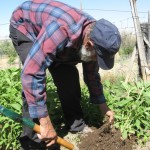 “Our country is rich in natural resources, but we have been bad administrators of our abundance. The state and monopolistic businesses are allowing an ecological disaster to happen. The forests continue to be exploited, the soil is becoming more eroded, and the water is becoming more and more contaminated by our state oil company and illegal logging.”
“Our country is rich in natural resources, but we have been bad administrators of our abundance. The state and monopolistic businesses are allowing an ecological disaster to happen. The forests continue to be exploited, the soil is becoming more eroded, and the water is becoming more and more contaminated by our state oil company and illegal logging.”
Now imagine 40 villages of five to 30 families each to which Hernández delivers a dozen varieties of drought-resistant fruit trees and lugs cement for water containment reservoirs as far as his 25-year-old pickup will carry him. Only three of these Tarahumara villages have running water and none have plumbing, their homes in caves or shacks burrowed into the Canyon walls.The immense Copper Canyon, formed by six rivers that merge and empty into the Sea of Cortez, has cavernous gorges deeper and longer than our Grand Canyon.
Twenty years ago, Hernández was one of the only steely ambassadors to the Tarahumara from the civilized world, driving down dusty trails until he ran out of road, then setting out to walk the winding dirt paths.
“In the early days I’d walk 10 hours by foot on cow paths to get to the farthest Canyon community,” he says. “Now I walk only two hours, since the lumber and mine companies and government are adding roads quickly.”
Because of his devotion to the Sierra, Hernández was chosen in 2006 as one of eight government workers tasked with land and community development projects in this wilderness region. The remote and foreboding canyon proved impenetrable to the others. A few years later Hernández was the only one left standing.
“In our needs assessment, the first thing the Tarahumara identify is the need for water,” says Hernández, whose water projects are drawing intensified support. “I receive water technology help from an engineer in Australia, water filtration consultation from Zoe International, supplies from the Mexican Center for Alternative Indigenous Development, and volunteers from American and Mexican universities,” he says.
A $2,000 grant from Canyon Scholars purchased the initial 200 sacks of cement. “Ten sacks intermixed with rocks helped us finish off an 18-foot well that supplied water to a village in Mazaribo,” Hernández reports with satisfaction.
One of his water catchment systems uses a corrugated metal building roof, a modest-sized tank, and drip irrigation. The government offers plastic tanks for $500 to contain 5,000 liters and $150 to contain 500 liters, he says. “But the smaller ones don’t last, and the larger ones the Tarahumara cannot afford.”
“We were able to provide water containment to 20 families in Saucillo. Even though they weren’t able to drink it, they can wash their clothes and water their gardens, and their cows will live. We’ve helped nine villages to date,” he says, “but 31 more are waiting.”
Nature plays a cruel joke following the typical nine-month drought season, with monsoon-like rains starting in July. If poorly managed, the few acres of farmable land can get washed away. The value of durable containment facilities cannot be overstated.
Straddling two worlds
Many Americans are shocked to learn that Hernández and his wife are largely unpaid workers in an operation run by volunteers on private and government donations and that all of these plants, trees, books, and workshops are given for free.
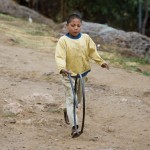 “It’s the Tarahumara way,” says Hernández. “We share what we have. Our community has a food cooperative. Our modest home was a barter. The problem is that the cash economy is replacing our subsistence farming as a way of life.”
“It’s the Tarahumara way,” says Hernández. “We share what we have. Our community has a food cooperative. Our modest home was a barter. The problem is that the cash economy is replacing our subsistence farming as a way of life.”
But Hernández also says, “If we take care of the world, God will take care of us.” He knows this may sound idealistic and extreme, and he admits that he carried substantial debt in the early days to live this way. But he has helped put three children through college, and his mission is now paying for itself.
Canyon Scholars’ Howard Stadem nods in admiration. “Hernández ties all of our world problems to the pursuit of money as an end in itself,” he says. “He has always had a holistic view that placed the highest priority on serving others and caring for the earth.”
His bartering and ecological lifestyle seemed idealistic 30 years ago, notes Stadem, who suggests that Hernández may just be ahead of his time.
“I have to admit that the mere mention of an ecological crisis produced yawns among many of us in the past,” Stadem says, “but it’s now being taken seriously even by some of our leaders in the US and Mexico. They used to say Hernández was crazy for carrying truckloads of spineless cactus into the Sierra for forage for the animals, but with the drought, now everybody wants some. He used to carry drought-resistant trees like the morera (white mulberry) by himself, but now the municipality pays for him to do it. What can you say?”
What today’s sustainability and occupation movements might say is: Wait a few years until the value of money is no more than the pulp it’s printed on. Grassroots civilization may increasingly transition to a barter economy, revealing the Tarahumara as leaders for the future.
Yet while Hernández’ and the Tarahumaras’ belief in nature’s provisions has worked for them up to now, current conditions have pushed the feasibility of their lifestyle to the brink in several ways: (1) Subsistence farming does assume land ownership, agricultural savviness, and water, all increasingly scarce assets in the drought-stricken Sierra; (2) 42 percent of the Tarahumara Indians have no income in a paying world that is encroaching upon them and (3) meanwhile, electrical lines, roads, radios, and walkie-talkies are creeping into Tarahumaran villages. Increasingly, money is needed.
A race against time
At times it feels to Hernández as if he’s losing a race against time.
The opinions of community development partners are divided about the value of and need for modernization among Tarahumara, says Hernández, who wants to preserve their dignity and self-determination.
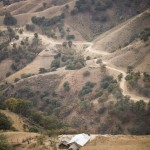 “In one case, nuns had blocked the development of a road to a Tarahumara village, but when the sisters were away on vacation, the Tarahumara approved it. They want more efficient means of getting their children to school.”
“In one case, nuns had blocked the development of a road to a Tarahumara village, but when the sisters were away on vacation, the Tarahumara approved it. They want more efficient means of getting their children to school.”
Since illiteracy prohibits most Tarahumarans from taking advantage of a border state economy crowded with 350 Mexican and American assembly plants, their main industry remains farming. But increasingly, meager agricultural yields are needed for their own families’ sustenance and are thus unavailable to produce a market income.
“Instead of farming their own ground and having their own apple trees, we saw up to 6,000 of them loaded onto cargo trucks and driven 10 hours to work in other apple orchards for cheap,” he says. “Their kids are left behind. We find them in the streets.”
Still, Hernández points out that the Tarahumara have centuries of experience surviving in spite of their surrounding culture, and they are still uniquely equipped as hunters and trappers to maximize what they have.
He gives a humorous example. “They have an herb they drop in the water that makes fish dizzy, so they can just grab them. They are simple, happy, and close to God.”
But sadly, because of their land displacement, many of the young have not learned the indigenous farming methods that for centuries preserved and made the most productive use of scarce soil. Changes seem inevitable.
Preparing the next generation
Meanwhile, the federal government has concocted another macro solution to uplift the Sierra’s economy, this time through tourism.
A subsidized tourist park has been built in the canyon, an hour southwest of Creel, with a zip line, lift, and cable car to view its breathtaking beauty—and, in Hernández’ view, to enable visitors to gawk at ancient, remote Tarahumara communities. 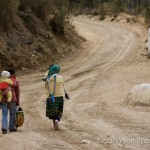
“It’s a desperate attempt to jumpstart the languishing economy of the Sierra,” says Stadem. “Last I read it was bringing up to 300 people a day by train, which at least brings customers to buy Tarahumara crafts.”
But Canyon Scholars’ investment is deeper, aiming to preserve what is sacred about Tarahumara culture while equipping the next generation in the canyon.
None too soon, the Hernández’ own daughter, Citlali, graduated in 2010 from the prestigious Chihuahua state law school, the only one of her 137 classmates to hail from the Sierra Mountains. Though not a Tarahumara herself, she is intent on using her training to defend their civil and land rights and to keep their culture and property from further exploitation.
Educating the next generation is a central thrust of Canyon Scholars, addressing another major failing of the federal government. In 2003, 64 percent of the Tarahumara population over 15 years of age had no schooling, 43 percent of children ages 6 to 14 did not attend school, and 57 percent of all Tarahumara were illiterate.
Mexican legislation guaranteed youth at least a ninth-grade education in 1993, but in 2002 legislators acknowledged that too many poor children were skipping school and working to help pay bills at home. So it created the Oportunidades program to provide cash subsidies to families in exchange for their parents’ commitment to their children’s regular school attendance, health clinic visits, and nutritional support.
While it’s working in other parts of Mexico, Hernández says that residents in most of the 3,000 villages in the 16 counties of the Copper Canyon are too remote to receive this help.
“Bilingual teachers are scarce and schools sit empty,” according to one Canyon Scholars report. “In one of the five primary schools we know of, a teacher arrived but left within a week. Another resigned.”
“Believe it or not,” says Hernández, “drunkenness and discouragement among teachers is common in the canyon communities.”
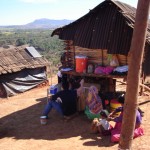 Education is an uphill battle, but one in which Canyon Scholars is making progress, playing a significant support role by developing relationships with students and teachers.The results have been significant.
Education is an uphill battle, but one in which Canyon Scholars is making progress, playing a significant support role by developing relationships with students and teachers.The results have been significant.
“We’ve connected Americans to junior and senior high students for 11 years,” says Stadem, “and many [Tarahumara] are now graduating from college to empower their communities and help their families escape the cycle of poverty.”
“We now have 15 kids attending the university,” says Maria Hernández, “and most intend to return to their communities. Esperanza, for example, will be a dentist. Lizania is studying to be an ecological engineer. And Margarita will be certified as a nurse. Her mother is a traditional herbal doctor, so she’s specializing in alternative medicine to carry on this tradition.”
Hernández, Maria, and their partners are making slow but steady strides, both preserving what’s valuable about the Tarahumara lifestyle and making life in the canyon livable for many.
“We ask the Owner of the vineyard to send us workers, better caretakers of his holdings, because we are few and inadequate. If we really ask, God will give it to us, and he will do what is not in us to do,” he says.
Todd Svanoe is a nonprofit consultant and veteran journalist who reports on inspiring efforts that make the world a better place. He can be reached via the Contact page on this website.
*For the safety of all involved, some of the names in this article have been changed. Fernando Hernández is a pseudonym.
For additional sidebars on the Tarahumara and the Drug War, including photos, see version published at: www.evangelicalsforsocialaction.org/document.doc?id=156


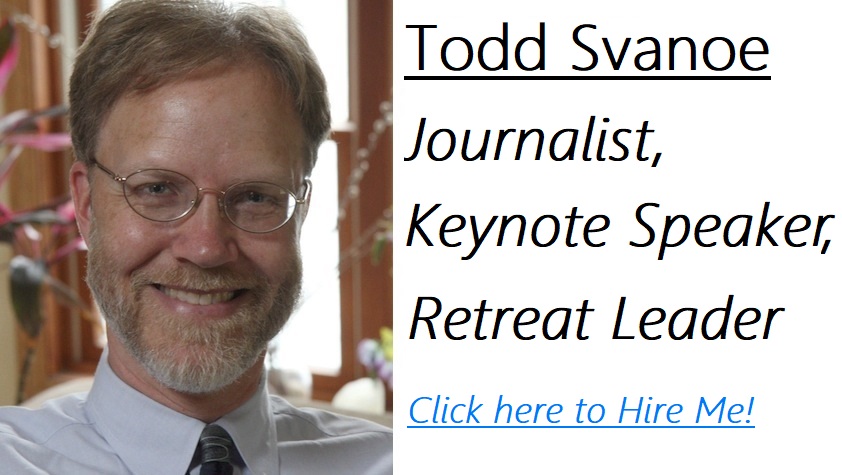

Hello, I read your blogs like every week. Your story-telling style is
witty, keep it up!
Way cool! Some very valid points! I appreciate you
writing this article plus the rest of the site is also very good.